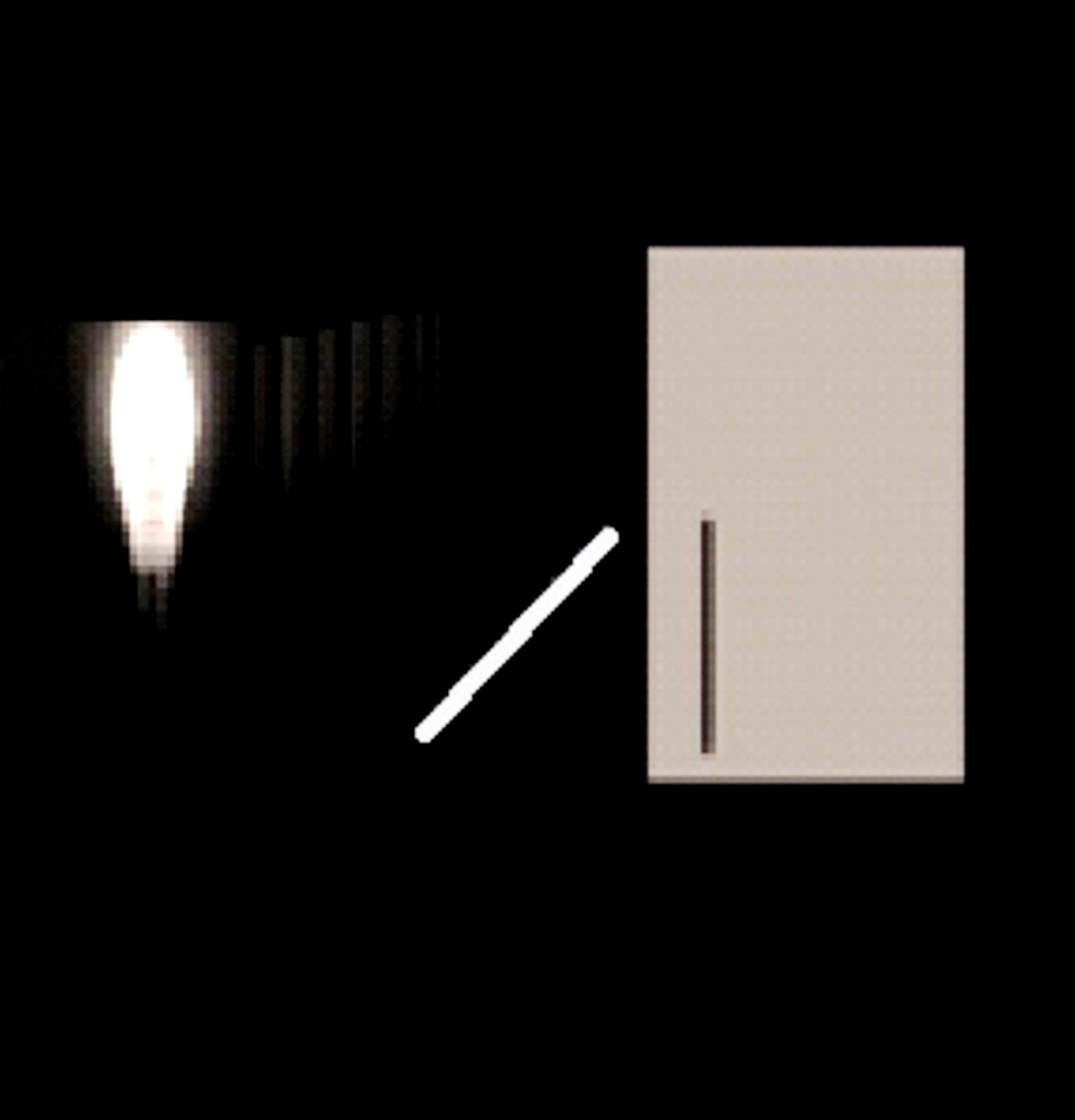WHY IS SIN (ANGLE) = OPPOSITE SIDE/
HYPOTENUSE.
Example 1
|~~|| Imagine a stick kept between a bulb and a
wall.
The front view of the
stick
|~~|| Now the shadow that falls of the stick upon
the wall is like the front view of the wall. Now lets say the stick is inclined
at 30 degree, only a small shadow of the
stick falls upon the wall.
|~~|| In other words, the wall presents the opposite side view of the slanting stick and thus gives us a measure of how much
the length of the stick appears to be reduced due to the inclination.
The side-view of the
stick
|~~|| Now if you look at the stick from
the side, you are obviously going to see the actual length of the stick, aren’t
you.
|~~|| No matter how much the stick is inclined, does it
change the side-view?
OPPOSITE SIDE/ HYPOTENUSE
= FRONT VIEW/ SIDE-VIEW.
|~~|| Seeing this way can help you
understand why the formula.
|~~|| The front-view is always
influenced by the inclination of the object. So apparently when an object tilts,
its front view reduces.
|~~|| The side-view is the actual
length of the stick. The side-view is completely unaffected by the slope of the
stick.
Thus the formula can be written as
APPARENT LENGTH OF THE STICK AS SEEN
FROM FRONT / ACTUAL LENGTH OF THE STICK.
SIN
o At 0⁰ an object is 0 % vertical. Hence sin(0)=0.
o At 90⁰ an object is 100% vertical. Hence sin(90)=100%=100/100=1.
Analogy 1.
Imagine a light bulb kept at your one hand and lets say there is a stick in your other hand.
Now look at the shadow of that stick on the wall.
The more vertical ( or Perpendicular to the surface on which it is standing) the stick is the more the shadow.
At 90⁰…full shadow. At 30⁰……half the shadow. At 0⁰…………no shadow.
|
Analogy 2:
Imagine a missile is thrown on ground. If the missile falls at 90⁰….the whole energy of the missile will be passed to the ground.



Collision at 90⁰ Collision at 60⁰ Collision at 30⁰ At 0⁰
§ Let’s say the missile falls with a force of 400KN. At 90⁰ all its energy goes to ground.
§ However what if the missile hits at 30⁰? Will all the 400KN force be transferred to the ground or only a fraction(a small part) of it?
§ This fraction(part) is sin(30)=1/2. Thus now the force transferred to the ground (impact on the ground) is ½ *400KN= 200KN.Conclusion
§ At 30⁰ Force (or pressure ) is half as compared to 90⁰.
§ Hence sin(30)=1/2.
§ Note:
§ At 0⁰ , The missile moves parallel to the ground and hence impact is 0.Hence sin(0)=0.
COS
§ Cos is a measure of how much horizontal (or parallel to the surface under consideration) an object is.
§ Hence cos(0)=1 (meaning at 0⁰ the object is fully horizontal)
§ Hence cos(90)=0 (meaning at 90⁰ the object is fully vertical and hence 0% horizontal).
§ Cos (60)=1/2 meaning at 60⁰ an object has ½ as influence as when it was fully horizontal (i.e at 0⁰).
§ Cos(180)=-1 meaning that the object is fully horizontal but in the opposite direction as it was at 0⁰.

Analogy 1
A Stick held below a light bulb will……….
 
put maximum shadow on the ground At 90⁰ the shadow will be absent on the ground.
when at 0⁰.
|
Alternate way to look at Trignometry
Angle (Ɵ)
|
Value
|
Percentage Form
|
Meaning
|
Sin(30)
|
1 / 2 * 100 = 50%
|
50% Vertical
| |
Sin(45)
|
1 /
|
1 /
|
70% Vertical
|
Sin(60)
|
86% Vertical
| ||
Sin(90)
|
1
|
1 * 100 = 100%
|
100% Vertical
|
Sin (180)
|
0
|
0 * 100 = 0%
|
0% Vertical
|
Similarly for Cos a table can be made.
What about TAN?
TAN is a measure of how much sloping an object (or graph) is.
Analogy 1

Imagine a slide. At 0⁰ its slope is 0%.
Hence Tan (0)=0.
Now imagine a slide at 90⁰. Can you still call it a slide? What will happen to a person who comes down such a slope?
In mathematical terms we say that its slope is infinite. Hence Tan(90)=
Note:
Negative values of Tan(Ɵ) means that the angle is more than 90⁰. (-ve sign plays the role of and indicator indicating to you that the slope is beyond 90⁰.
|
Analogy 2
[Graphical meaning of tan(Ɵ)]
Imagine that on the y-axis, you plot the speed of the car.
On the x-axis you plot the time taken by the car to reach that speed.

Now ,
TAN(Ɵ)=acceleration of the car.
SIN(Ɵ)=Final speed of the car.
COS(Ɵ)= Total Time taken by the car.
|
And SEC , COT AND COSEC?
Well in some cases….some things vary inversely with respect to sin(Ɵ), cos(Ɵ) and tan(Ɵ).
 Analogy 1 Analogy 1
For example the more sloping a road (downhill) is……the less the friction between the road and a rock rolling along the road.

§ Friction
The above equation [1] can also be written as follows
§ Friction
|
Final Notes:
§ The max value of sin,cos,sec or cosec is ‘1’.
§ ‘1’ indicates full or complete (Full shadow, Full force etc.)
§ Minimum is ‘0’(absence of that component).
§ All other values hang between ‘0’ and ‘1’.
§ Negative values indicate angles greater than 90 Degrees.
§ All the value of sin,cos and tan are ratios.
§ These ratios are functions (i.e they keep changing) with the values of Ɵ.



No comments:
Post a Comment